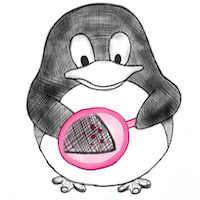Receive a weekly summary and discussion of the top papers of the week by leading researchers in the field.
 Dermatology
Dermatology
Computer-aided classification of indirect immunofluorescence patterns on esophagus and split skin for the detection of autoimmune dermatoses.
In Frontiers in immunology ; h5-index 100.0
Hocke Jens, Krauth Jens, Krause Christopher, Gerlach Stefan, Warnemünde Nicole, Affeldt Kai, van Beek Nina, Schmidt Enno, Voigt Jörn
2023
autoimmune dermatoses, deep learning, immunofluorescence tests, neural networks, tissue classification
 General
General
Pretreatment with Eupatilin Attenuates Inflammation and Coagulation in Sepsis by Suppressing JAK2/STAT3 Signaling Pathway.
In Journal of inflammation research
PURPOSE :
METHODS :
RESULTS :
CONCLUSION :
Lu Yilun, Li Ding, Huang Yueyue, Sun Yuanyuan, Zhou Hongmin, Ye Fanrong, Yang Hongjing, Xu Tingting, Quan Shichao, Pan Jingye
2023
Eupatilin, JAK2/STAT3, coagulation, inflammation, sepsis
 General
General
Biological function simulation in neuromorphic devices: from synapse and neuron to behavior.
In Science and technology of advanced materials
Chen Hui, Li Huilin, Ma Ting, Han Shuangshuang, Zhao Qiuping
2023
Neuromorphic computing, artificial intelligence, memristor, neuron, synapse
 Public Health
Public Health
The use of deep learning for smartphone-based human activity recognition.
In Frontiers in public health
Stampfler Tristan, Elgendi Mohamed, Fletcher Richard Ribon, Menon Carlo
2023
activity recognition, data science, deep learning, digital health, physical activity, public health, smartphone, wearable technology
 General
General
Global and non-Global slow oscillations differentiate in their depth profiles.
In Frontiers in network physiology
Seok Sang-Cheol, McDevitt Elizabeth, Mednick Sara C, Malerba Paola
2022
machine learning, sleep, sleep EEG, slow oscillations, space-time
 General
General
Differentiating acute from chronic insomnia with machine learning from actigraphy time series data.
In Frontiers in network physiology
Rani S, Shelyag S, Karmakar C, Zhu Ye, Fossion R, Ellis J G, Drummond S P A, Angelova M
2022
actigraphy, acute insomnia, chronic insomnia, dynamical features, insomnia detection, machine learning, sleep parameters
Weekly Summary
Receive a weekly summary and discussion of the top papers of the week by leading researchers in the field.
